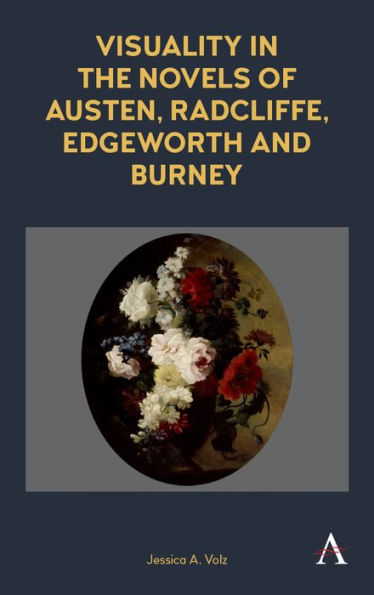Visuality in the Novels of Austen, Radcliffe, Edgeworth and Burney
Visuality in the Novels of Austen, Radcliffe, Edgeworth and Burney argues that the proliferation of visual codes, metaphors and references to the gaze in women’s novels published in Britain between 1778 and 1815 is more significant than scholars have previously acknowledged. The book’s innovative survey of the oeuvres of four culturally representative women novelists of the period spanning the Anglo-French War and the Battle of Waterloo reveals the importance of visuality – the continuum linking visual and verbal communication. It provided women novelists with a methodology capable of circumventing the cultural strictures on female expression in a way that concealed resistance within the limits of language. In contexts dominated by ‘frustrated utterance’, penetrating gazes and the perpetual threat of misinterpretation, Jane Austen, Ann Radcliffe, Maria Edgeworth and Frances Burney used references to the visible and the invisible to comment on emotions, socio-economic conditions and patriarchal abuses. Visuality in the Novels of Austen, Radcliffe, Edgeworth and Burney offers new insights into verbal economy and the gender politics of the era by reassessing expression and perception from a uniquely telling point of view.
1125054030
Visuality in the Novels of Austen, Radcliffe, Edgeworth and Burney
Visuality in the Novels of Austen, Radcliffe, Edgeworth and Burney argues that the proliferation of visual codes, metaphors and references to the gaze in women’s novels published in Britain between 1778 and 1815 is more significant than scholars have previously acknowledged. The book’s innovative survey of the oeuvres of four culturally representative women novelists of the period spanning the Anglo-French War and the Battle of Waterloo reveals the importance of visuality – the continuum linking visual and verbal communication. It provided women novelists with a methodology capable of circumventing the cultural strictures on female expression in a way that concealed resistance within the limits of language. In contexts dominated by ‘frustrated utterance’, penetrating gazes and the perpetual threat of misinterpretation, Jane Austen, Ann Radcliffe, Maria Edgeworth and Frances Burney used references to the visible and the invisible to comment on emotions, socio-economic conditions and patriarchal abuses. Visuality in the Novels of Austen, Radcliffe, Edgeworth and Burney offers new insights into verbal economy and the gender politics of the era by reassessing expression and perception from a uniquely telling point of view.
115.0
In Stock
5
1

Visuality in the Novels of Austen, Radcliffe, Edgeworth and Burney
252
Visuality in the Novels of Austen, Radcliffe, Edgeworth and Burney
252
115.0
In Stock

Product Details
| ISBN-13: | 9781783086603 |
|---|---|
| Publisher: | Anthem Press |
| Publication date: | 03/01/2017 |
| Series: | Anthem Nineteenth-Century Series |
| Pages: | 252 |
| Product dimensions: | 6.00(w) x 9.00(h) x 1.00(d) |
About the Author
From the B&N Reads Blog
